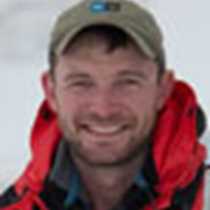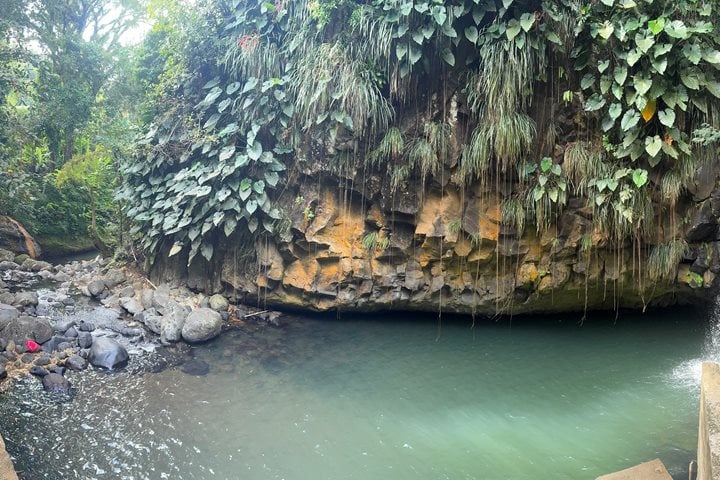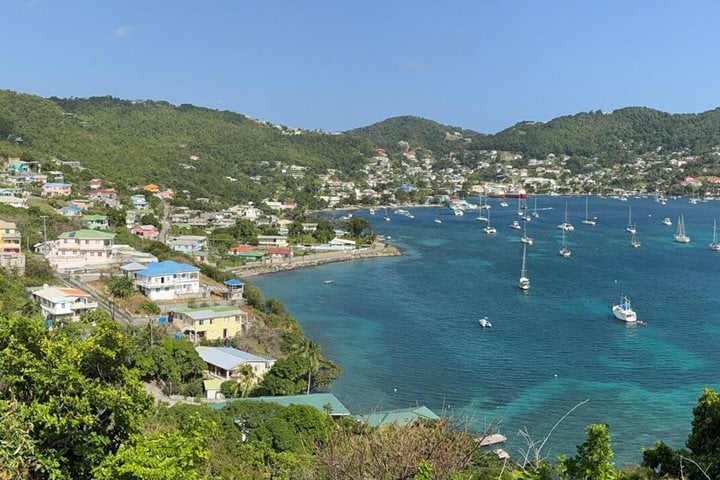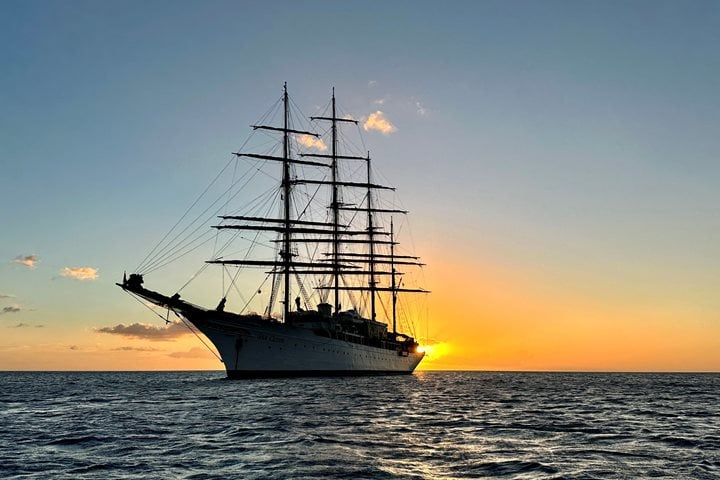We motored into Prince Rupert Bay in the island of Dominica at 6:20 a.m. shortly after sunrise and dropped anchor at 6:56 a.m. The bay is not deep and we were at anchor in 40 meters (120’). Dominica takes its name from Columbus who saw it first on a Sunday, hence Dominica, for the Lord’s Day. We boarded tenders and headed to the fish pier in the main town of Portsmouth. This is Dominica’s second city and has a population of some seven thousand. The Saturday market was in full swing when we arrived. People were selling everything from coconuts, carrots, yams, dasheen (taro), breadfruit, tomatoes, cinnamon, vanilla and ginger, all piled high on the vendors small stalls. Chickens were running about and the occasional rooster cry mingled with the fabulous calypso band that was playing some great reggae tunes. I noticed the vendors who were closest to the band were swaying with the music. Dominica did not disappoint!
We met our wonderful guides and were off for the 40-minute drive up to the heights of Morne Diabolotin at 4,775 feet the tallest mountain on the island and, second after a peak in Guadeloupe, the tallest mountain in the Antilles. We entered the rain forest in three groups. The island in its wettest parts receives upwards of 300 inches of rain a year. In the time before Hurricane Maria we would have been in a dark, cool rain forest, however now because of the extensive damage to the vegetation due to 200 mph winds the sun penetrated to the forest floor. Despite the savagery of the hurricane we saw a wonderful variety of plants. We saw an enormous number of trees which are called by their Creole names: the massive Gumierier tree, the kwe kew wouge (the red Kw Kwe), the Bwa Bande (the hard wood), the Blan pistole (the white pistol tree), the Bwa kaka (the “poop” tree), and the zel mouche (the fly’s wings). Flowers were everywhere, hibiscus, antherium, orchids, poinsettias, croton, morning glory and fruits too—mangoes, papayas, bananas, oranges, grapefruits, avocados, coffee and coco trees. We saw bullfinches, purple-throated Caribbean hummingbirds, at least two parrots (the Jacko) and lastly the kuku manioc (or in English, a chicken hawk).
After our excursion to the rain forest and a scrumptious lunch, we visited the 18th-century British Fort Shirley. I gave a brief overview of Cabritz Point and of Fort Shirley. The fort was begun in 1774 and finally completed by 1820 and built entirely by local slaves. The fort is massive and spreads across most of the 200 acres of the Cabrits’ headland. It has only been possible to recover a small part of the original. Strangler vines and jungle cover the rest of the compound. The fort never saw action and existed principally as a deterrent. It was designed by the 18th-century American architect Harrison to protect the Royal Navy at anchor in Prince Rupert Bay. The fort’s canons could sweep the entire area in front of the town of Portsmouth. There was another battery across the bay and the two batteries made the bay inviolate. At its zenith the fort had 700 enlisted men and a contingent of the 8th West Indian Regiment made up of slaves. The French forces under Admiral DeBouille took Dominica in September of 1778 only to lose it again in the Treaty of Paris of 1783. Abandoned in 1852, the fort lay derelict covered by strangler figs and the jungle until a good friend of mine, Dr. Lennox Honeychurch, a native of Dominica, undertook restoration in 1982. Lennox is still working on the restoration and has accomplished miracles. After our visit some of us went to the Purple Turtle Beach for a wonderfully refreshing swim and with a Kubuli Beer at the local beachfront inn.
Dinner was served on the Lido under the stars in this wonderfully tranquil and beautiful island.









